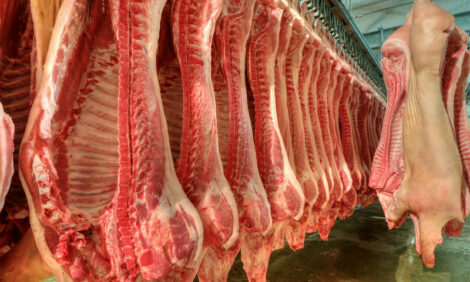



Tips to Prevent Spread of Swine Dysentery
UK - In the aftermath of the 2001 foot and mouth disease epidemic attention to biosecurity and the risk of disease spread onto pig farms was increased.But judging by recent disease activity, the lessons learned at that time have been forgotten or are being ignored, say Nadis vets.
Swine dysentery has a serious impact on pigs to the point where many consider its presence in the farm contrary to sustainability. Over the last few months there is evidence the disease, which has been relatively quiet for some time, has started to increase, with pockets of disease expanding particularly in the pig dense area of East Anglia, and north-east England.
The disease can only be spread by movement of pigs, or movement of faeces from infected pigs. Reports have suggested that introduction of the disease onto previously uninfected farms has resulted from:
- Pig movement and introduction of infected pigs.
- Transport contamination.
- Local spread by birds and other wildlife.
- Local spread by shared machinery.
- Local spread by personnel.
- Spread by knackerman.
Health reports and veterinary liaison can help avoid the introduction of infected pigs and ensuring lorries are thoroughly washed and effectively disinfected before moving weaners will avoid transport spread.
Whilst spread by wildlife – especially but not exclusively onto outdoor herds – is very difficult to contain, contaminated people and machinery should never move between premises without the appropriate cleaning, clothes changes and rest periods. Fellmongers must be kept well away from stock areas.
Unless attention is paid to this issue, the disease will continue to spread and any hopes of regional disease elimination will be frustrated.
Further Reading
| - | Find out more information on Swine Dysentery by clicking here. |








